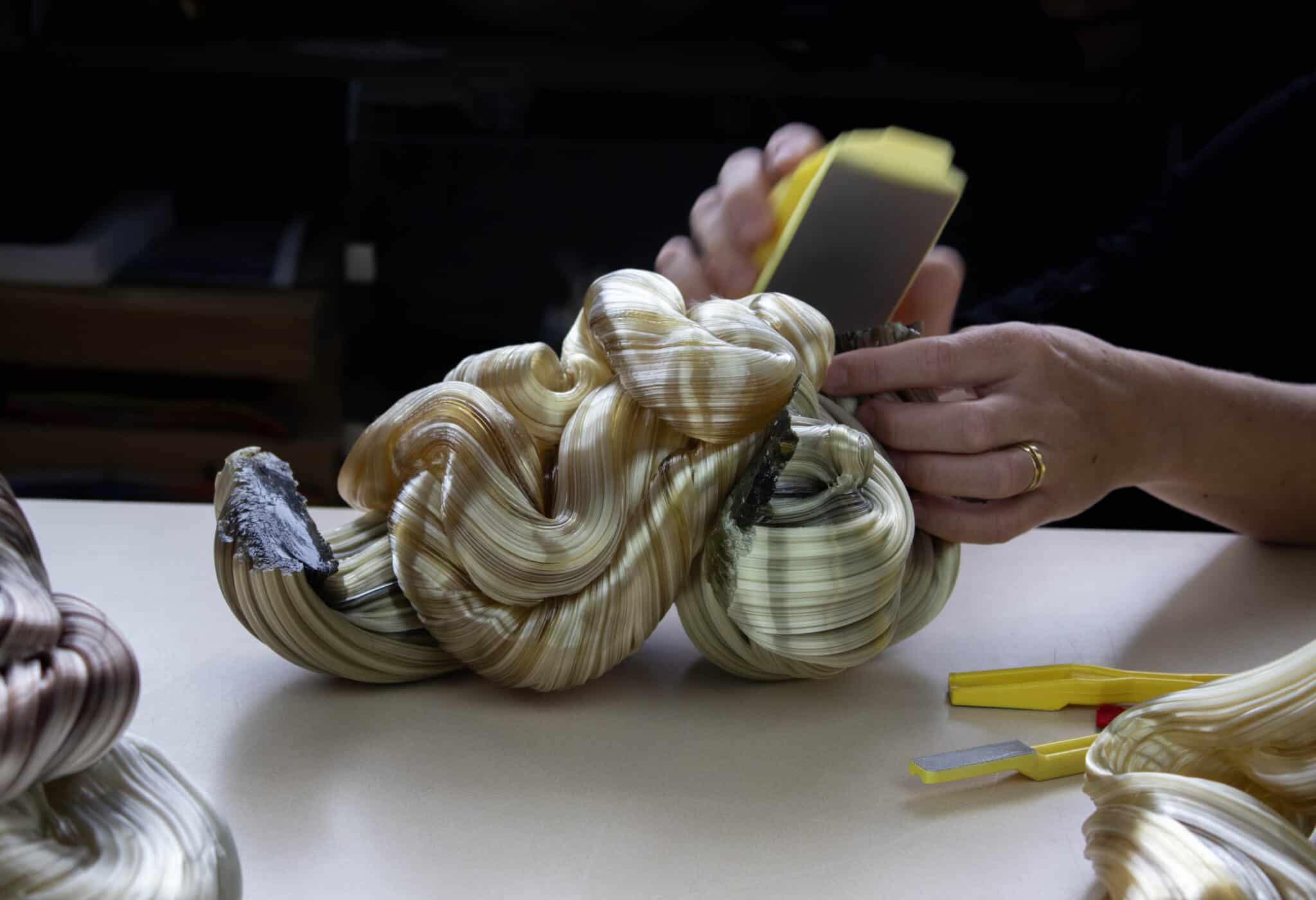
« Although made of glass and static in their final state, the objects´ playful exploration into conceived softness, reveals our flexible perceptions of the world and reminds us that things are often not as they first appear. »
How do you stand out with your technique?
I first developed the technique of stretching and folding hot glass in 2011. Air is trapped every time I fold the glass, turning a regular solid mass of glass into many layers of thin airy strings. Air, in combination with the optical properties of glass, results in the light being reflected in multiple directions creating a shimmery effect on the surface that is unusual in glass. Also, most of my sculptures are made of primarily transparent glass, but the air within them transforms their appearance and makes them opaque.
In addition, by stretching and folding hot glass, the strings on the outside cools down much faster than the warm core, offering a unique opportunity for me to work with the illusion of softness and create moments frozen in time. In the last seconds of malleability, I shape the glass by hand wearing heat resistant Kevlar gloves.
I had long had an idea to test out if I could fuse several of these stretched objects directly as I was making them in the glassblowing studio. In 2021 I finally tested it for the first time – and it worked! But I had never truly believed that it would, because all my knowledge regarding fused glass told me that it would fail due to the low temperature of the annealer, which must be at 510 degrees C at all times. But I discovered that adding freshly made objects could carry just enough heat for the fuse to happen.